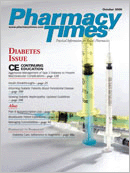Blockbuster Patent Expirations Bring a Shift in Business Models
Patent expirations of blockbuster drugs have dramatically changed the dynamics of the pharmaceutical industry. Patents for branded drugs worth more than $43 billion in annual sales are expected to expire by 2009, according to IMS Health (Table 1). Large pharmaceutical companies may not be able to depend on blockbusters to sustain them.
Although generics companies seem to have the upper hand, the nature of the industry is more complex. As part of the shift in business models, generics firms and big pharma companies, once distinct enemies, are becoming strategic allies in certain deals, while at the same time continuing to compete fiercely.
The increased threat of patent expirations has made both big pharma companies and generics makers vulnerable and has forced both to reassess their competitive strategies. Whereas the sheer number of blockbusters going off patent?and the revenue unbranded versions could generate?may give generics makers reason to celebrate, big pharma companies are not giving up their territory without a fight. Each category of player?generic and branded?has nudged closer to or even sprinted energetically into the other's once-well-defined market.
With low barriers to entry, competition among generics makers is already quite fierce. As more and more drugs come off patent, big pharma's increasingly defensive responses have made it considerably more difficult for generics makers to succeed by solely manufacturing FDA-approved knockoffs. Big pharma companies' defensive strategies include slowing the rate at which generics hit pharmacy shelves; undermining generics' credibility with health care providers; offering followon products to compete with generics; offering their own authorized generics; and engaging in price wars (Table 2).
Even as moneymakers such as paroxetine (Paxil), bupropion HCl (Wellbutrin SR), and sertraline HCl (Zoloft) go off patent, big pharma companies have retained some revenue from these drugs by offering authorized generic versions in the 180-day exclusivity period. To market its authorized generics, big pharma has partnered with generics makers, in some cases divisions of their own companies. For example, in July 2006, Pfizer authorized a generic version of its blockbuster Zoloft to its Greenstone subsidiary.
Authorized generics offered by big pharma can hit the market at the same time as unbranded generics because the formulas are proven and do not require an approval process. They are relabeled versions of the established branded drugs.
Some legislators and industry analysts argue that branded generics are anticompetitive. In July 2006, when introducing a bill restricting authorized generics, Sen Charles Schumer (D, NY) said that "authorized generics are wolves in sheep's clothing." The Generic Pharmaceutical Association commissioned a study, the results of which also were published in July, which claims that introducing authorized generics "significantly reduces incentives for independent generic firms to challenge invalid brand name patents and to develop noninfringing processes."
In response to the critics, the Pharmaceutical Research and Manufacturers Association commissioned IMS Health to conduct a study, published earlier this year, on the effect of authorized generics on pricing in the exclusivity period. The researchers said that "authorized generics actually add to competition, which is good for consumers." The Federal Trade Commission is studying the effect authorized generics have on market competition.
At the same time, big pharma companies, in a perhaps predictable twist, have urged generics makers vulnerable to thin margins and in need of alternative revenue sources to join their ranks to market authorized generics. For example, Dr. Reddy's markets the generic versions of simvastatin (Zocor) and finasteride (Proscar) as part of agreements it has with Merck.
Biopharmaceutical Patent Expirations
The fact that several blockbusters are due to go off patent between now and 2011 has raised the stakes and made the battle fiercer, but also more complex. The slow demise of the blockbuster revenue model has changed the nature of the pharmaceutical business overall.
Big pharma companies are increasingly wary of relying exclusively on branded drugs. As a result, companies may be comprised of both a branded business and a generics division. An example is Novartis, with its generics division, Sandoz. As part of Pfizer's acquisition of Pharmacia in 2002, Pfizer bought Greenstone Ltd, a generics subsidiary that already is manufacturing authorized generic versions of the company's blockbusters. Sanofi-Aventis also has established a generics division, Winthrop Medicines.
Big pharma companies have routinely funded studies to extend the life span of their drugs. Many firms have applied to the FDA for new uses for their blockbusters, organizing new advertising campaigns around branded drugs that will soon be off patent or whose patents have been successfully challenged. For example, the FDA recently approved Plavix for treatment of the sudden blockage of coronary arteries or acute ST-segment elevation myocardial infarction, in patients who are not going to have angioplasty.
To defend against big pharma's strategies, generics makers have bulked up and acquired specialized manufacturing capabilities via consolidation. They also have started to develop generic branding for their organizations and diversified to add research and development operations for new drugs.
Although some biopharmaceuticals have already come off patent, it is still hard to say when generic alternatives will hit the market in force. The FDA's approval of Sandoz'recombinant human growth hormone Omnitrope (whose active ingredient somatropin also is found in Pfizer's Genotropin) earlier this year has encouraged the generics industry to be hopeful about other future opportunities.
Yet, the FDA has still not defined a process of evaluating and clearing generic biopharmaceuticals for approval, and the agency has cautioned the industry not to expect many, if any, further approvals of biogenerics in the near future (Table 3).
Ms. Christopher is a freelance writer based in Portland, Ore.

